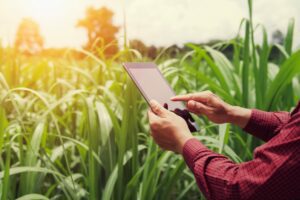There is no denying that every new technology related to digital agriculture is based on analyzing data. However, when it comes to analyzing anything, it is always “garbage in, garbage out.” Then comes artificial intelligence, machine learning, big data analytics, and unstructured data. The promise was that the algorithms would figure it out by themselves – all you need to do is throw the data at it, and it will spew out the knowledge. This is where the old truth prevailed, “garbage in, garbage out.” Therefore, unless you fix your data management practice, you shall have no chance to successfully deploy any new technologies within the parameters of precision farming.

Putting the Effort to Organize Farming Data – Here is How You Do It and Why It’s Important
The solution to data mismanagement problems is not difficult. It just needs a bit of determination and structure. Here is what can be done.
1. Data needs to be gathered! Period! If you forget to document a certain thing, it doesn’t exist. And you cannot learn from something that didn’t happen. To learn, you need to collect data.
2. It is imperative to make sure that the formats match up. When the field is split into different sections, and you name the sections, stick to it and be consistent.
3. Data needs to be stored in one place. Yes, this is not only a necessity but will also make your life easier! Also, make sure that data is stored in such a place from where it is easy to share the data with others that will deliver future services.
Regarding soil data analytics, timestamps plays a crucial role and is one of the most important attributes. If you want to keep the first bloom of a plant for future reference, you must take a picture of it. It is not possible to analyze farming in the United States unless you know when it happened!
Plants are not concerned about the dates. They are about temperature. The plant’s calendar gets measured in temperature days. Therefore, to implement digital farming techniques in the best possible way, data is stored in two timestamps; one is for humans to know when something happened, and the other is for the plants to know when something happened.
Precision agriculture is a journey, and data management must be the primary focus of it. It might seem tedious, but rest assured that the rewards are waiting. From good data comes a wide array of opportunities.
The Core of Digital Farming in the USA – DATA!
At the core of digital agriculture are data and IoT, enabling the harvesting of more data on a large scale. These data points together create a digital framework of information that helps unravel more answers about sustainability, field testing, and crop management.
These days, the applications of digital agriculture are endless and scalable for smallholder and broad-acre farms. AI and Cloud Storage are breaking down the data silos. Therefore, the information that was previously inaccessible has become available anywhere to anyone . This has enhanced the scope of better crop nutrient management, agronomic field trial research, and sustainability impact assessments.
Digital farming in the USA and data management tools offer agricultural professionals, farmers, and scientists the raw data required to convert the agriculture sector into a digital-first industry. It will help feed close to 800 million human beings who currently don’t have basic food security. Also, consumers want better quality food with higher nutritional value and sustainably sourced food products. Therefore, digital farming in the USA and sustainability go hand in hand.
Digital Farming in the USA – Considering the Farmer’s Perspective
From the farmer’s perspective, digital farming in the USA offers innumerable innovations. These include IoT-connected devices that can help optimize irrigation and fertilizer applications. Also, it helps implement automation and robotic processes that reduce growing costs. Digital agriculture offers farmers a field-level view for better insights and helps control the required crop health inputs. The detailed insights from digital farming technologies increase profits for farmers and also create a neutral or even positive environmental impact.
Digital Farming in the USA – The Consumer’s Perspective
The demand right now is for readily available high-quality foods at affordable prices. With digital agriculture, it is possible to make data-driven decisions and ensure accurate forecasting in the supply chain to cater to the demands.
Digital Farming in the United States – The Supply Chain
A digitally connected supply chain is much more efficient, sustainable, and resilient. Did you know? Only about 1% of the digital technology is applied to the supply chain. Fortunately, it has the potential to increase by 23% by the end of 2025. This is according to Logistics Insider. A digitized supply chain will reduce the losses in sales by 75%, transportation and warehousing costs up to 30%, inventories up to 75%, and warehousing costs by 30%.
In Conclusion:
It is crucial to have an adequate supply of the basic staple foods for human survival. Also, an abundance of nutritional and affordable food is essential to the development of human progress. Therefore, digitization in farming in the USA is the key to the transformation from traditional/inefficient farming practices of the 20th century. The global food demand is estimated to double by 2050. It is important that digital innovations in agriculture keep pace to meet global food demands. We have the technology and resources to feed every human on the planet if they are used in the best way. The challenge is channeling these technologies into efficient processes and applying them strategically at a holistic level.
Digital farming in the USA is crucial for better agricultural yield. For the best field mapping and analysis, contact SoilOptix® today! Visit https://soiloptix.com/ for details.
